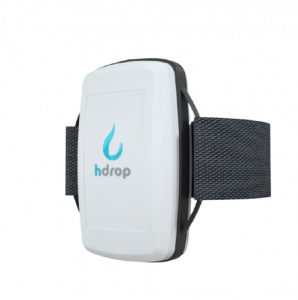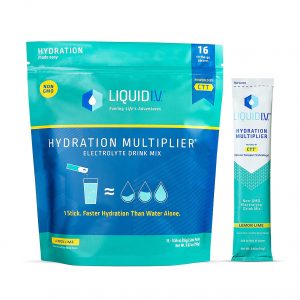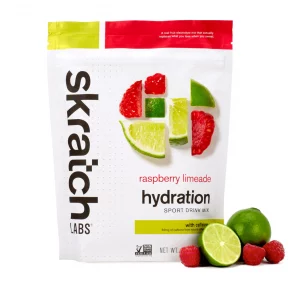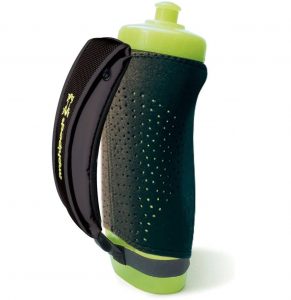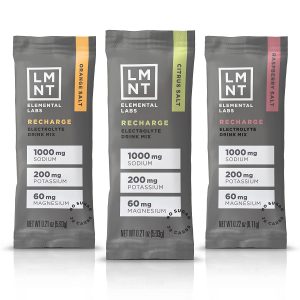Sodium Needs for Runners
We have been told, ‘Don’t salt your food,’ ‘Salt is bad for our health,’ and ‘Get rid of the salt shaker.’ Because of these ingrained statements, it is no wonder that so many of us are confused about how much sodium we need as runners.
If we look at the Dietary Reference Intakes, the adequate intake to support optimal health for Americans is 1500 mg sodium per day. We have been repeatedly told to limit sodium to less than 2300 mg per day and that we only ‘need’ 1500 mg sodium per day.
However, as runners, we’re a little different. Our nutrition needs often vary from typical recommendations to keep our population healthy. Let’s remember that most people are not running 30 – 60 miles per week for fun. This changes things. It changes our sodium needs minimally to dramatically, depending on our sweat rate and composition.
The average sodium loss per liter of sweat is 900 mg. However, there is a high variability in sodium losses among runners. Some runners lose 350 mg sodium per liter of sweat, while some lose 1800 mg sodium per liter of sweat.
Add to the complexity that most athletes lose ¾ – 1.5 liters of sweat per hour, but some runners lose <¼ liter of sweat per hour, and others lose 3+ liters per hour.>
Remember that the amount of sodium we need daily correlates to the amount we lose through sweating. We need more sodium if we are heavy or salty sweaters or are training in the heat outside or on a treadmill.
It makes sense that many runners are confused about how much sodium they need to consume. Factors impacting this are individual sweat rate, sweat composition, and weather.
To help runners minimize symptoms from a mismatch of sodium intake and loss via sweat, check out the table & calculator below.
Sodium Chart & Sodium Calculator
How to use this chart: Think about how you typically feel during & after a run or workout in the heat and/or humidity. Which runner below sounds the most like you? Select that runner on the calculator below to calculate your estimated sodium needs.
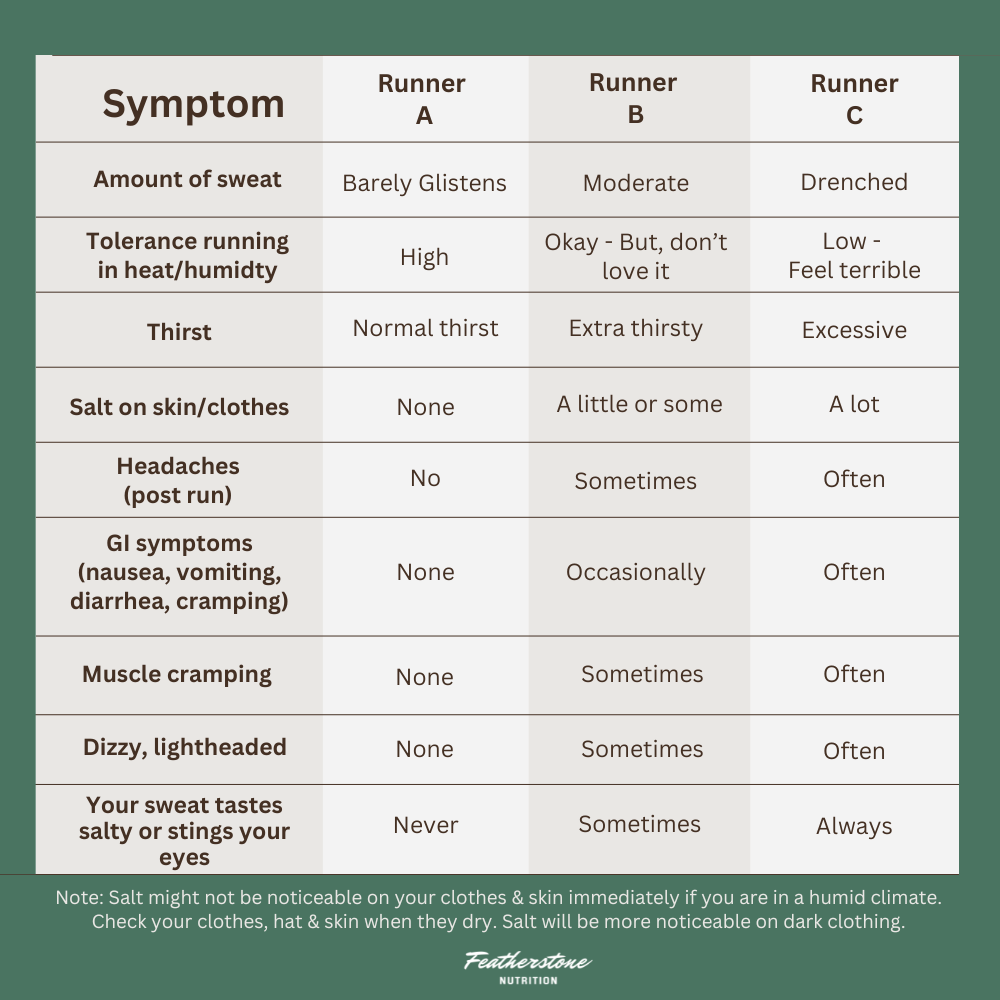
Sodium Intake Timing:
Before, during & after the run
There is no right or wrong way to replace sodium lost during runs. We can consume more sodium the night before, the morning of, during, or after our run. Or, we can do a combination of them all.
If you have a low sweat rate and never notice salt streaks on your clothing, you may need to intuitively increase the salt added to food based on your cravings. If you are a heavy, salty sweater who experiences GI issues or cramping while running, you may need to increase sodium intake the night before, the morning of, during, and after runs. Remember, we can consume sodium through electrolyte drink supplements and food. Use a combination of these to meet your needs.
The calculator above gives a great starting point for calculating how much sodium you should consume per hour during runs. But please remember that we are all unique runners with different symptoms, so please tweak and change things until you feel your best during and after runs.
Common Questions:
Is it possible to take in too much sodium?
Yes, it is possible to overconsume sodium. It’s essential that we understand our sodium needs change dramatically with our sweat losses. Just like carbohydrates, we need to increase sodium when training and sweating more. If we are not a heavy sweater or training in colder climates, we may not need to increase sodium intake intentionally.
How would I know if I am overdoing my sodium intake?
This is a tricky one. Symptoms of inadequate sodium intake and excessive sodium intake mimic one another. If we consume too much sodium, we may notice fluid retention, swelling, excessive thirst, bloating, and high blood pressure.
How would I know if I need more sodium?
If you experience headaches, dizziness, nausea, GI issues, and/or muscle cramping during or after your runs & workouts and you are a heavy sweater, you are likely not consuming enough sodium.
What are the symptoms of not consuming enough sodium?
As mentioned above, symptoms of inadequate sodium intake can also include swollen hands, dizziness, and bloating. Heavy, salty sweaters that do not take in adequate sodium are also more prone to GI issues, muscle cramps, and poor recovery.
I have read that sodium intake during runs does not change running performance. What are your thoughts on this?
Many of you have sent me posts on Instagram and research articles stating that we do not need sodium during runs. And, that sodium intake during runs does not improve performance. Please remember that many of these studies have a very small sample size, the one tagged above is 8 runners. And, as this page discusses in depth, sweat loss, sodium loss, and related symptoms vary dramatically from runner to runner. These wide variations make studies like this difficult and often water down the importance of adequate sodium consumption in heavier, saltier sweaters.
In addition, taking sodium during runs is not solely for performance benefits. Oftentimes, it is to minimize dehydration <which we know decreases performance> improve recovery time, and minimize debilitating symptoms <nausea, lack of nutritional intake, headaches, fatigue, etc> post-run.
While not everyone will see a specific performance improvement during their runs when they change the amount of sodium consumed, the cumulative effect over a hot season of training is undeniable.
PMID: 27478425, 28332116, 36227164, 31350753, 33722257, 10097029, 18450987
Runner Example:
Sam is a runner and hasn’t been feeling well after some of her summer long runs – sometimes she has headaches and/or muscle cramps in her calves. In colder months, Sam doesn’t think she sweats much, but in the summer, Sam sweats a decent amount and can see salt on her neck and hat after a run. She drinks water during her runs because she doesn’t like anything sweet. Sometimes she will drink a sports drink after the run.
A friend told Sam that she may need more sodium, so Sam did some research and found Featherstone Nutrition’s sodium calculator.
Take a look below to see how Sam figured out her sodium needs <and fuel needs> for her long run.
After reviewing the chart, Sam thinks she sounds the most like Runner B. Sam has a 1.5 hour run coming up, so she plugs her numbers into the calculator. Sam should aim for 400-600 mg sodium per hour of her run, which equals 600-900 mg total for the 1.5 hour run.
Sam needs to decide how to ingest that sodium. Sam likes to drink water on her runs, so she opts for SaltStick FastChews. Sam also likes Bonk Breaker Energy Chews as her running fuel. Sam does a little math to figure out the goal for her long run plan.
Goals:
per hour | total for 1.5 hr run
Fuel: 50g carb per hour | 75g total
Sodium: 400-600 mg per hour | 600-900 mg total
Fluid: 12-14 oz per hour; 18-21 oz total
Fuel
Bonk Breaker Energy Chews: 18g carb per serving (2 servings per pack)
75g carb (goal) /18g carb per serving = 4 servings = 72 g carb & 260 mg sodium
Sodium
SaltStick FastChews: 50 mg sodium + 2 g carb per tab
600-900 mg sodium (goal) – 260 mg (from BB chews) = 340-640 mg sodium
340 mg sodium/50 mg sodium per cap = 7 tabs; 640mg sodium/50 mg = 13 caps – 7-13 tabs total
Long Run Plan:
Fuel
90 min run/4 serv BB chews = 22 min
1 serving about every 20 min
Sodium
90 min run/9 tabs = 3 tabs every 30 min
3 tabs at start, 30 min & 60 min
Water
20 oz Handheld with water
Sips throughout the run with the goal to finish the full bottle.
Other Helpful Resources:
Need More Help?
Schedule a 30-minute session to talk through your sweat rate, hydration needs, products to use and create a training and/or race day plan. Apply here.





